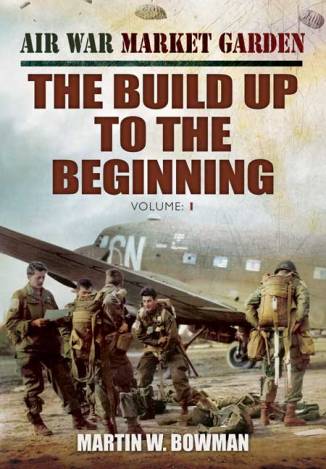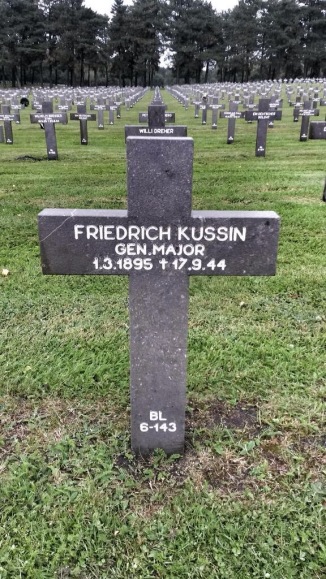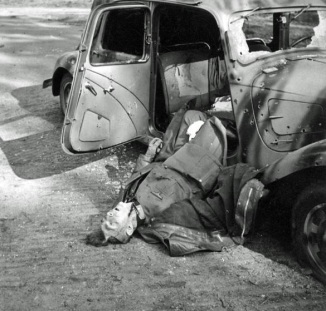
“They must have thought the entire American Army had jumped right on top of them”. This was the view of Captain Robert ‘Doc’ Franco of the U.S 82nd Airborne Division of his jump at Grave at the beginning of Market Garden. It’s also the point that the reader jumps straight into Volume two of Martin Bowman’s engaging four part study of Operation Market Garden with So Near and Yet So Far.
Here we encounter the drops of the 82nd at Grave and Nijmegen and those of it’s sister Division, the 101st Airborne around Eindhoven. In a series of sharp actions the bridges were taken which would allow XXX Corps to push North on its way to Nijmegen. That was only half of the job. As Maxwell Taylor, the Commander of the 101st observed the Americans then had to defend ‘Hell’s Highway’ against counterattack and closure by German troops in “a situation akin to the early American West were small garrisons had to fend off Indian attacks along the great stretches of road”.
Defend it they did. Just. So many Germans, in numbers unforeseen by Allied Intelligence, were present that the town of Best never was captured by the 101st or Guards Armoured. Best was a mini epic where Joe E. Mann, already badly wounded and without the use of his arms won a posthumous Medal of Honor by smothering a Stick Grenade with his body to protect his buddies.
Reuben Tucker, commander of the 504th PIR and roused his men to action with the rallying call of “Men, it’s open season on the Krauts; you know what to do”. They did and succeeded in capturing the long bridge over the Maas at Grave and a crossing over the neighboring canal at Heumen opening the road to Nijmegen.
Meanwhile at the Road Bridge in Arnhem, John Frost’s force that was predominantly drawn from the 2nd Battalion, Parachute Regiment fought on and fought hard whilst awaiting relief. Bowman’s writing on the Bridge Perimeter battle is as good as it gets as we see fighting on a room by room, floor by floor and house by house basis.
It’s poignant to read the account of Harold Padfield, 1st Parachute Squadron R.E on the fighting at the schoolhouse. Harold was at Arnhem for the 70th Anniversary last September and laid the wreath on behalf of the Veterans before sadly passing away in December.
The leadership at the Bridge was inspired. Digby Tatham-Warter led his men wearing just his Red Beret, then a Bowler Hat and carrying just his umbrella whilst coming under heavy fire and showing an utter disregard for his own safety. Frost was also similarly inspired. He was an officer of huge experience yet carried no personal weapon. He felt his job was to command and not get drawn into duels with the enemy. He also maintained his sense of humour as noted by the Padre, Father Egan. As Frost exited a toilet, unshaven, tired and dirty his face lit up on seeing the Padre and said “Father, the window is shattered, there’s a hole in the wall and the roof has gone, But it has a chain and it works”.
Bowman moves the action West to the drop of the 4th Parachute Brigade at Ginkel Heath. With one Parachute Battalion, the 11th immediately detached to head straight for the bridge the other two, the 10th and the 156 moved into the Wolfheze Woods. They didn’t get far, running into elements of the 9th SS on the Dreijenseweg and fighting a battle as they pulled back in the midst of a Glider Landing bringing in the Heavy Equipment of the Polish Parachute Brigade. The Poles, coming under fire from both the British and the Germans promptly fired back at both. It threatened to become a shambles yet a semblance of order was just about restored. However, you can’t disagree with one man of the 10th Battalion who observed “it was a real cock-up, but then again it was a real cock-up everywhere that day, I reckon”
With the attack towards the Bridge by the 1st, 3rd and 11th Parachute Battalions along with the 2nd South Staffordshire’s thwarted, the 1st Airborne Division realised that Frost had to be left to his fate at the Bridge. Instead, Urquhart knew he had to defend some kind of bridgehead on the North Bank of the Rhine and he decided to do that with a Defensive Perimeter in Oosterbeek. This is where Volume Three of the series will be set.
The chronology of the fighting in Arnhem on occasion wanders a little from its path and the timelines, although good really should be at the end as appendices. It’s a minor quibble though because as in the first book, Bowman compensates with his excellent eye for an anecdote and his use of the very best memoirs lends a certain authority to the account.
Air War Market Garden Volume 2 – So Near and Yet So Far (170 pages) is Published by Pen and Sword Books.
http://www.pen-and-sword.co.uk/Air-War-Market-Garden-So-Near-and-Yet-So-Far-Hardback/p/3860



















